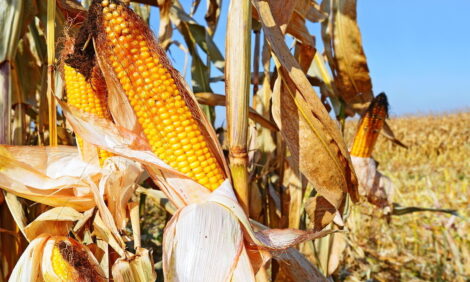



Vacuum Skin Packaging - Reduce Waste, Improve Shelf Life
ANALYSIS - Vacuum skin packaging could reduce waste, whilst improving shelf life of products, said Professor Ian Richardson from the University of Bristol. Speaking at an EBLEX processor conference, he presented the results from studies looking at the effects of beef packaging on meat quality and shelf life. Charlotte Johnston, TheMeatSite editor reports.Whilst many consumers complain about the excessive use of packaging on meat products, it is this packaging which maintains the shelf life, said Professor Richardson.
The life cycle analysis (LCA) carbon cost of a piece of beef in a pack is between 100 to 200 times that of the pack. The meat is the valuable product, which is why it needs preserved.
The common method for packaging meat in the UK is modified atmosphere packaging (MAP).
Reducing Pack Size
One of the objectives of Professor Richardson's team was to determine the optimum gas volume and gas mixture composition in MA packs. Could trays be made smaller with less headspace, or could less oxygen be used?
Professor Richardson said that it is generally believed that a ratio of three volumes of gas to one volume of meat are required for optimum shelf life in high oxygen MAP. However, his team found that the effect of gas to meat ratio on colour chroma of beef loin steaks made little difference.
They suggested that pack sizes can be reduced with the saving of gas, plastic and space during transport and retail display. Professor Richardson warned that the meat must not touch the pack or discolouration will occur.
Research carried out by Professor Richardson's team at the University of Bristol has confirmed what the industry has always suspected, that the longer meat is aged for the shorter the shelf life is.
High oxygen gives increased colour shelf life, which is why MAP is the preferred packaging choice - consumers want red meat.
Looking at whether oxygen concentration could be reduced, Professor Richardson said that reducing the oxygen concentration does not reduce lipid oxidation but does potentially reduce colour shelf life by at least one day. This is particularly important for aged meat.
Alternative packaging
Professor Richardson and his team then went on to examine the alternatives to MA packaging for beef cuts. This included comparing MA with vacuum skin packaging (VSP) and permeable vacuum skin packaging.
The advantages of MAP is that high oxygen gives increased colour shelf life, creating the red colour. The carbon dioxide also increases microbial shelf life, however shelf life is reduced.
Vacuum skin packaging seals meat portions between base film and a heat-softened top film, which is vacuum drawn onto the meat surface to give a skin tight pack. No oxygen means that the colour doesn't turn the rich red that is desired, but shelf life ranges between three to four weeks compared to the average seven days for MAP.
Further to this, the research demonstrated that when VSP the meat would continue to tenderise.
Professor Richardson said that when vacuum packed, the meat will remain brown. But once opened and exposed to oxygen the meat will bloom and turn red.
"There are concerns in the industry that consumers will reject vacuum packed meat, because of the colouring," he said. "However, Mark and Spencer's has successfully convinced customers to accept their vacuum skin packaging."
"With consumers so used to MA packaging, promotional work must be done to convince consumers that VSP will not affect the quality of the meat, but improve shelf life and reduce waste."
Whilst not all the causes of premature browning in VSP have being identified, rapid pH fall is not the cause, said Professor Richardson.


